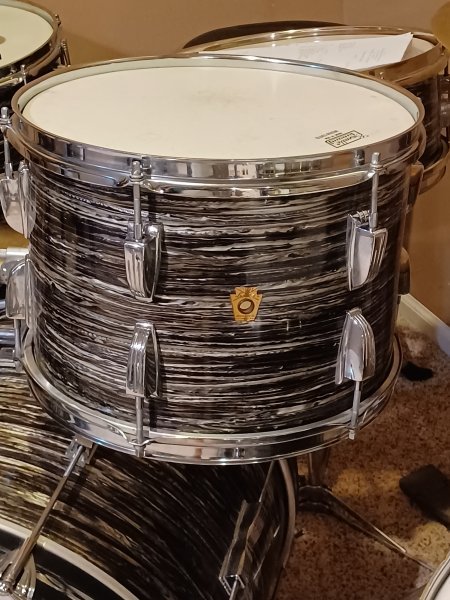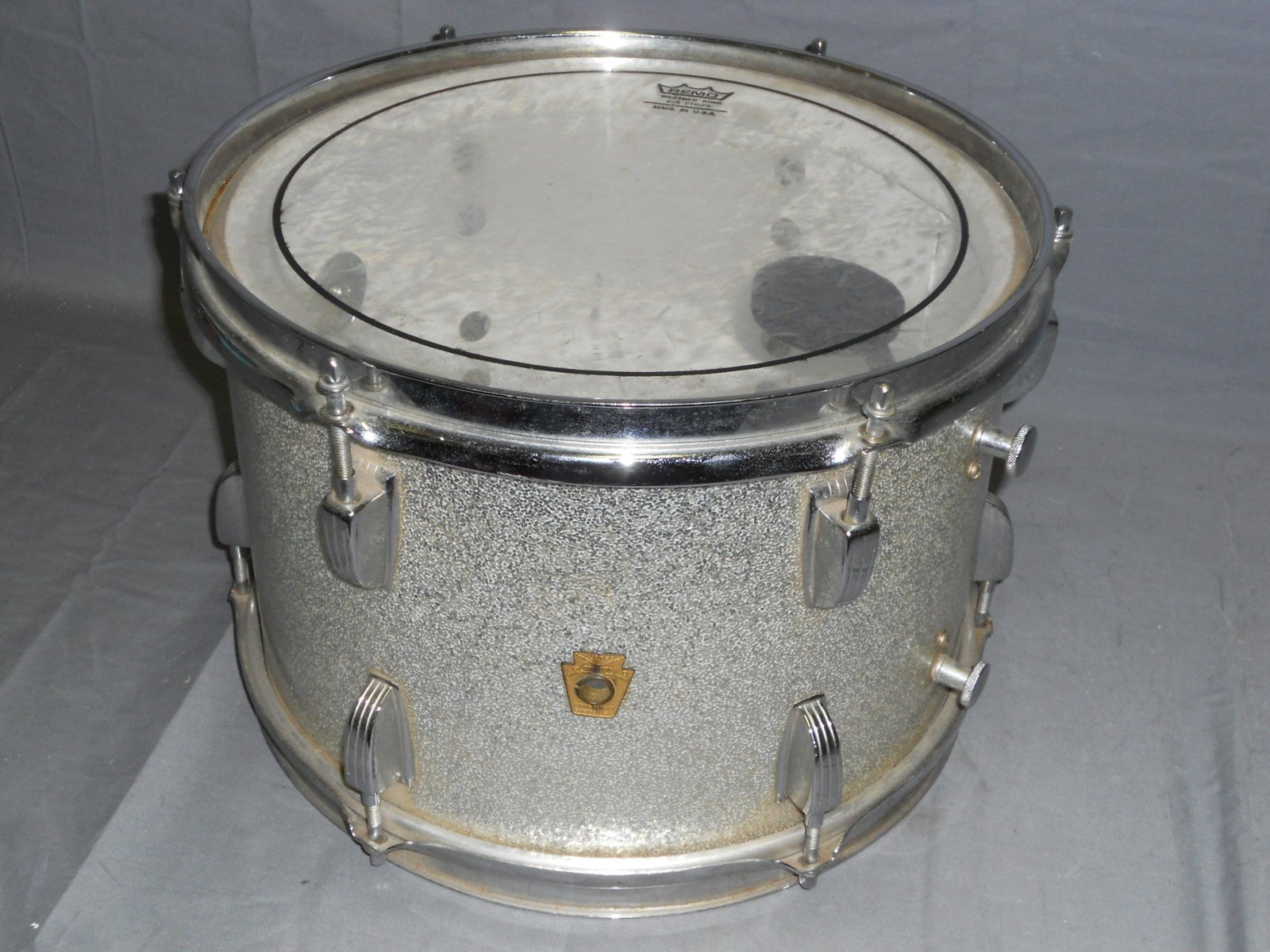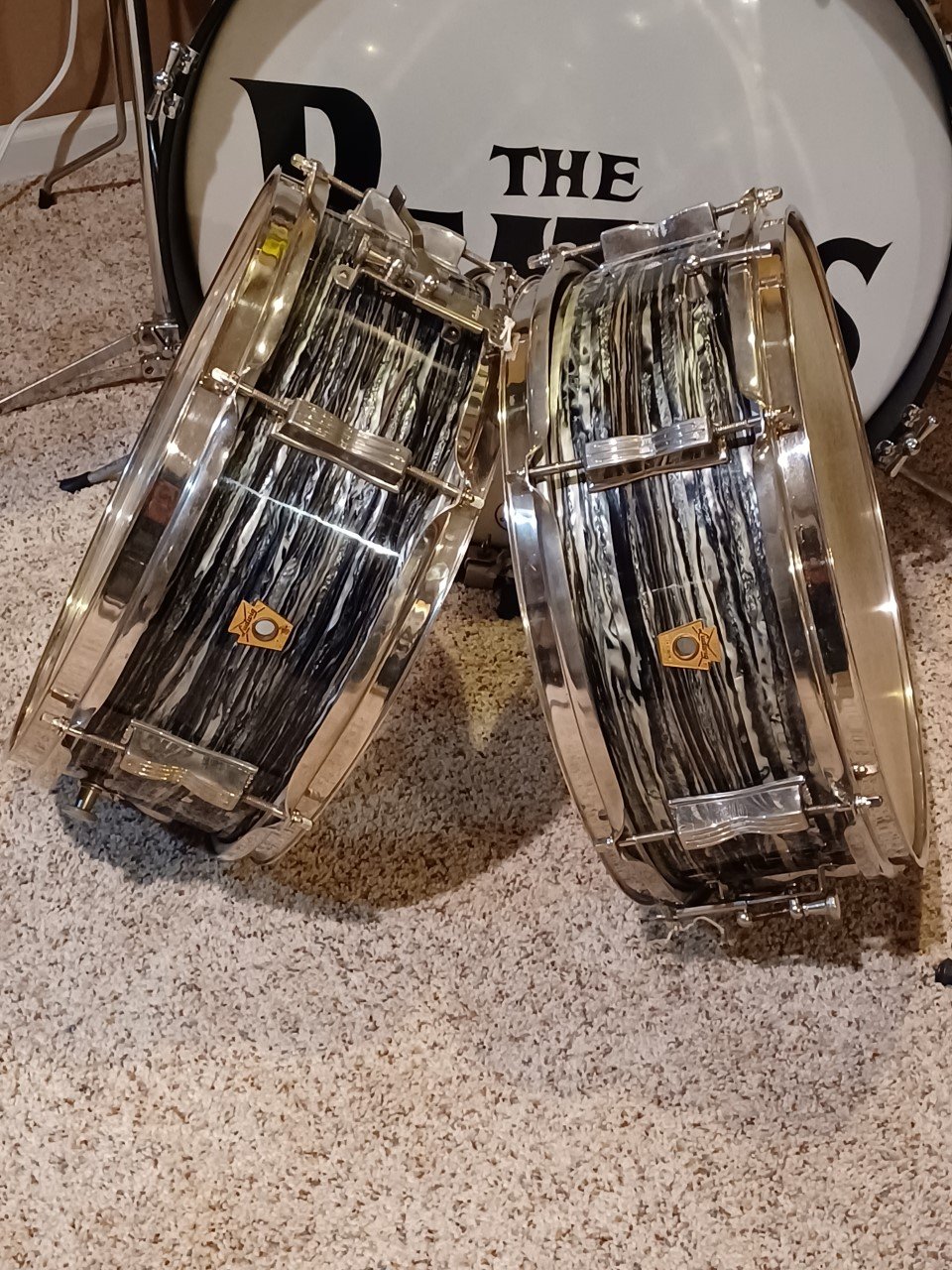This article documents the types and sizes of drums recorded in a large database of 1960s Ludwig Keystone badge drums to provide a glimpse into Ludwig’s 1960s production.






This study focuses on Keystone badge drums from 1960 to 1969. It includes drums with pre-serial number badges (about October 1960 - December 1963) and those which received serial numbers (about November 1963 – December 1969). The earlier Transition badge drums (1958 – 1960) and the group of Keystone badge drums without serial numbers date stamped in 1970 are not included. A total of 8,970 individual items are documented. This includes drums for snares, toms, floor toms and bass drums; as well as marching drums, cocktail drums, congas, timbales and even some canister thrones. All drums which indicated either the type of instrument or the dimensions was included in the study. Data is presented sorted by drum type as well as drum dimensions.
Caution – Only 8,970 of approximately 850,000 drums made during the time period have been documented. This represents a bit more than one percent of the total believed to have been made. Further, the vast majority of the drums included in the study have been listed for sale on Ebay, Reverb or other internet marketplaces or have been discussed on online drum forums like drumforum.org and vintagedrumforum.com. The sampling is not completely random and therefore not statistically representative. Therefore, one should refrain from making definitive statements about Ludwig production based upon this study. Nonetheless, it is an interesting look at the Ludwig drums documented in the last thirteen years. It is likely as close as we will get without access to Ludwig’s actual production records.
Snare drums make up almost half of the drums documented. Snare drums were either produced in much greater numbers or the resale market has much more activity with snare drums, or some combination of the two.
Ludwig placed badges on many instruments and even its canister thrones.
Metal shell models outnumber wood shell models, even with wood marching drums considered. Supraphonic and Acrolite models both outnumber Pioneer and Jazz Festival models.
Almost exactly the same numbers of 8x12” and 9x13” toms are reported.
Nearly two thirds of the floor toms are 16x16” versus about one-third which are 14x14”.
More than ninety percent (90%) of bass drums have 20” and 22” diameters.
A future article will look at the set configurations seen in the 1960s.






